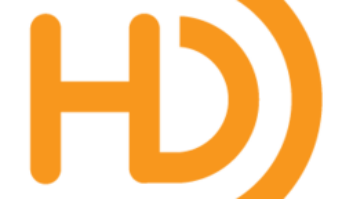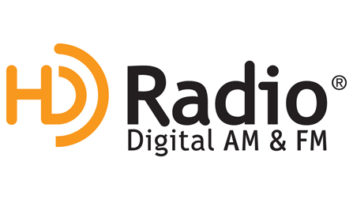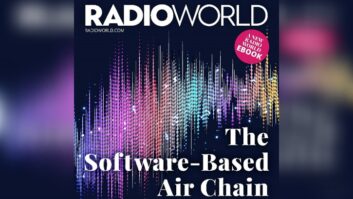WASHINGTON NPR Labs has begun lab tests and could begin field work this month as part of its further studies related to a possible digital FM power increase in the United States.
Proponents say regulatory approval of a voluntary power increase is needed to improve digital signal coverage before HD Radio portables arrive on the market, expected this fall.
Opponents say raising digital power will interfere with FM analog signals, essentially shooting terrestrial radio in its own foot because most listeners will still hear radio via analog signals for a long time to come.
Both commercial broadcasters and iBiquity Digital are involved in the new NPR tests. That’s a change from last year when commercial broadcasters and iBiquity turned in test data in a joint filing to the commission while NPR filed its own test data and the two ended up with different, in some cases conflicting, results.
IBiquity and some large radio groups that have converted stations said their studies — showing predicted and actual results if digital power were increased by up to 10 dB (to minus 20 dB) — proved that the risk of harmful interference to existing analog service would be “minimal.”
NPR Labs data, on the other hand, “showed at least 16 percent of noncommercial stations would experience an impact to more than 20 percent of the population within their protected coverage area by falling below the signal-to-noise ratio where listeners rated the audio as good,” according to Mike Starling, vice president and chief technology officer of NPR and executive director of NPR Labs.
The new tests, funded with a $350,000 grant from the Corporation for Public Broadcasting, are being conducted in a “collaborative and open fashion” with commercial broadcasters and iBiquity, according to Starling. Indeed, there’s a working group in charge of test activity and a larger peer review group looking at plans and procedures.
Included in the working group are the radio companies that first filed at the FCC last year in support of an FM IBOC power increase. These “joint parties,” including Clear Channel, CBS and Greater Media, “have a decision-making role” and a say over the project, according to Starling.
It wasn’t clear in April whether funding would come from iBiquity or commercial broadcasters. However both have offered resources for the effort, meaning personnel, facilities and, in the case of iBiquity, test equipment and test vehicles.
What is a ‘managed’ increase?
CPB and associations such as the Consumer Electronics Association, the North American Broadcasters Association, the International Association of Audio Information Services and the Association of Public Radio Engineers are members of the peer review group. The testers report to this body.
The six-month tests are being conducted to figure out the best approach to increase digital FM power.
IBiquity President/CEO Bob Struble has said IBOC stakeholders are trying to figure out exactly what a “well-managed” digital power increase would mean.
Starling concurred, saying the goal is to identify a “managed” way to raise digital power levels that will be acceptable to all of the stakeholders, including regulators, iBiquity and those with interference concerns as well as those pushing for the highest possible power level.
The efforts will establish industry recommendations for the amount of power increase needed to improve digital radio coverage while protecting the existing analog FM system and its subcarriers.
In some cases, commercial facilities and their technical personnel may participate in the tests. The commercial entities are comfortable with NPR Labs doing the actual testing, he said, adding that other stakeholders may observe some of the testing.
Collaborating makes sense, he said. “We’ve got the same interests at stake. We all want to see HD reach its potential and serve the public.”
At the same time, he said, “We’re mindful of the interference consequences that might not have surfaced at first blush.”
Hopefully, by this summer the industry will be in a position to nail down some spacing allowances for a well-managed power increase, he said, with data to back up recommendations to the commission. A unified submission would be “ideal,” he said.
“Hopefully, we will know how close we’ve come to that when we interpret the results.”
Test specifics
The new testing includes a combination of lab testing and field work.
While test sites for critical spacing testing hasn’t been solidified, some participating stations are confirmed. NPR Labs plans to obtain additional data on indoor reception improvements at various power levels (–20 to –10 dBc) using FMs WVXU and WGUC in Cincinnati, KUHF in Houston and certain stations in Minneapolis.
One study will look at mobile sensitivity calibration. What happens to perceived audio quality in the mobile listening environment? “Do things like road noise, fans and heaters have an impact on perceptibility,” Starling asked. While the question has debated for decades, “We want to do controlled tests.” Towson University’s Dr. Ellyn Sheffield is heading up this endeavor.
NPR Labs is also testing SCA analog reception capability to determine whether turning up digital power is compatible with radio reading services, which operate at 67 kHz and 92 kHz.
Another study involves indoor and mobile testing to figure out “what you get for each increment of a digital power increase,” he said. The lab will test what happens to the analog and digital signals when FM IBOC power is increased incrementally. Testers will look for empirical evidence of analog interference within protected contours at intermediate power levels.
New NPR President/CEO Vivian Schiller said it is “critical” to complete the testing and resolve these important issues and protect existing analog FM service.
Test participants that have been selected so far include American Public Media and Minnesota Public Radio, St. Paul; WABE(FM), Atlanta; WAMU(FM), Washington; WBGO(FM), Newark; WDUQ(FM), Pittsburgh; WFAE(FM), Charlotte; WNYC(FM), New York; WTMD(FM), Towson/Baltimore; WVXU(FM), Cincinnati; WUKY(FM), Lexington, KY; WUSF(FM), Tampa; KJZZ(FM), KBAQ(FM), and Sun Sounds Radio Reading Service, Phoenix; KQED(FM), San Francisco and KQEI(FM), Sacramento; and KUHF(FM), Houston.











